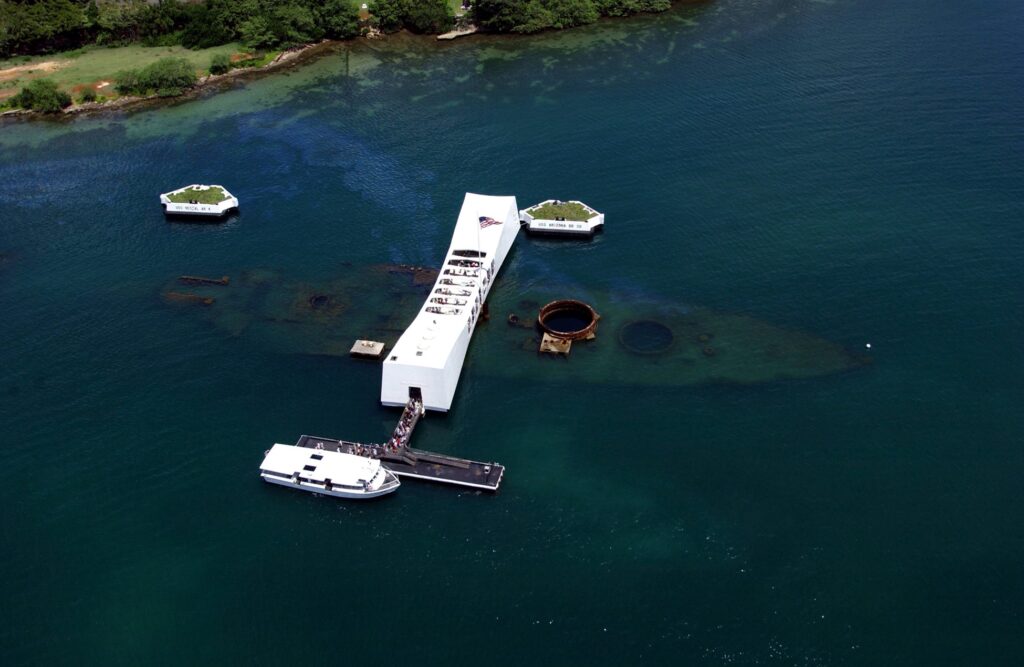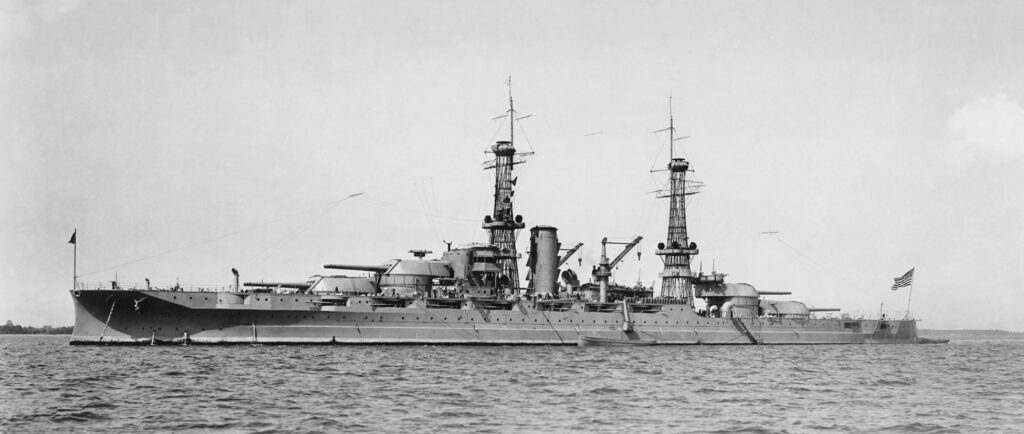Pearl Harbor Remembrance Day, Dec. 7, was last month. It is an important date in our history, Dec. 7, 1941, “a day that will live in infamy.” On that day the Japanese Navy attacked Pearl Harbor on the island of Oahu in Hawaii leading to the United States entering World War II. If you ever get the chance to travel to Hawaii, make time to visit the Pearl Harbor National Memorial and the U.S.S. Arizona Memorial which is located there.
While researching Pearl Harbor and the Memorial, I came across an interesting connection between Pearl Harbor, the U.S.S. Arizona Memorial and the King of Rock and Roll, Elvis Presley. On March 15, 1958, the 85th United States Congress authorized plans for a U.S.S. Arizona Memorial enshrined around the sunken battleship at the Pearl Harbor naval base. The memorial would need private donations to fund the project. The estimated cost of the project was $500,000.
In late 1960, editorials began appearing in newspapers around the country requesting donations for the memorial. It was stated that $200,000 was still needed to complete the memorial. Elvis’ manager, Colonel Tom Parker, read an editorial in a Los Angeles newspaper and felt it would be a worthy cause to donate to and the publicity couldn’t hurt either. On Jan. 11, 1961 at a press conference at the Hawaiian Village Hotel in Honolulu, Hawaii, it was announced that Elvis would be coming to Hawaii in March for a benefit concert for the U.S.S. Arizona Memorial Fund.
The concert would be held at the Bloch Arena at Pearl Harbor. Colonel Parker insisted that all proceeds including concessions and Elvis souvenir sales go to the Arizona Memorial Fund. He told the press that he saw no reason that the benefit would raise no less than $50,000. He also announced that Elvis would remain in Hawaii for a few weeks after the concert to begin filming his latest movie, Hawaiian Beachboy. The film would also be known as Waikiki Beachboy before finally being produced as Blue Hawaii.
On March 5, 1960, Elvis Aaron Presley was discharged from active duty in the United States Army. He resumed his career immediately, recording multiple record albums and appearing in two movies, G.I. Blues and Flaming Star while filming a third Wild in the Country. He had two number one singles, Stuck on You and It’s Now or Never. The soundtrack record for G.I. Blues was number one on the charts for 10 weeks. At age 25 he had sold over 80 million records. Elvis’ music was being heard by a wider audience. Conservative radio stations especially in the Bible Belt were now playing his newer music where before they shunned the rock and roll star. His two years in the service where he served honorably helped win him new fans.
Tickets went on sale March 13, 1961 at the Sears record department at Ala Moana Shopping Center in Honolulu. Ticket prices were $3, $3.50, $5 and $10. They advertised that the first 1,000 people to purchase tickets would receive an autographed photograph of Elvis. Ringside seats were made available for $100. They were sold to businesses and corporate executives.
On March 25, 1961, Elvis landed at Honolulu Airport. He was greeted by 3,000 screaming fans, mostly teenagers. Later that evening, he performed at the benefit concert. Opening acts included comedian Minnie Pearl, singing quartet the Jordanaires, and musicians Boots Randolph, D.J. Fontana and Scotty Moore. Elvis performed 15 of his songs to an enthusiastic and screaming audience. Concert ticket sales brought in $52,000 exceeding Colonel Parker’s goal. After concessions and donations at the door were totaled, the benefit concert raised $64,000 insuring that there would be a start of the memorial for Dec. 7, 1961, the 20th Anniversary of the Pearl Harbor attack. It would be Elvis’ last live performance for eight years.
The publicity of the Elvis Presley benefit concert helped bring in more public and private donations from around the country. In April of 1961, U.S. Senator Hiram Fong of Hawaii, praised Elvis for the fundraiser during a speech asking the Senate to pass a bill requesting that Congress appropriate $200,000 for the completion of the U.S.S. Arizona Memorial. Aided by Hawaii’s Representative in the House, Dan Inouye, the bill would be passed and the memorial completed in 1962. Over two million people visit the memorial annually.
The benefit concert was good for Elvis and good for the state of Hawaii. The making of the movie Blue Hawaii brought more fame and fortune for Elvis. Blue Hawaii would be Elvis’ highest grossing film at the box office. The soundtrack for the movie would be the number one album on the Billboard charts for 20 weeks. For the state of Hawaii, the film highlighted much of the beauty of Oahu and Kauai and attracted more tourists to Hawaii. They soon had another tourist attraction with the opening of the U.S.S. Arizona Memorial which is visited by people from all over the world.
A rock and roll icon helped save the memorial. In 1977, when Elvis died, the Navy placed a wreath in his honor at the U.S.S. Arizona Memorial. The King was gone but not forgotten!


